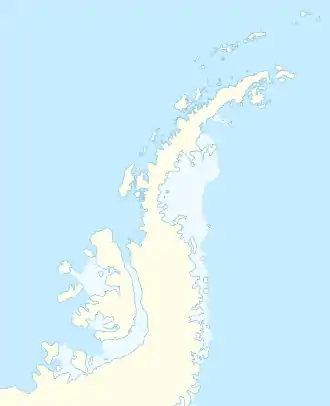Owston-Inseln
Die Owston-Inseln sind eine Gruppe kleiner Inseln vor der Loubet-Küste des Grahamlands auf der Antarktischen Halbinsel. Im Crystal Sound liegen sie 1,5 km westlich der Darbel-Inseln vor der Einfahrt zur Darbel Bay.
| Owston-Inseln | ||
|---|---|---|
| Gewässer | Crystal Sound | |
| Geographische Lage | 66° 24′ S, 66° 5′ W | |
| ||
| Einwohner | unbewohnt | |
Vermessungen des Falkland Islands Dependencies Survey zwischen 1958 und 1959 dienten ihrer Kartierung. Das UK Antarctic Place-Names Committee benannte sie 1959 nach dem britischen Kristallographen Philip George Owston (1921–2001), der die Röntgenbeugung zur Analyse von Strukturen und Molekülbewegungen im Eis erstmals angewendet hatte. In Chile wird diese Inselgruppe gemeinsam mit den Darbel-Inseln als Islas Quirihue zusammengefasst, deren Namensgeberin die chilenische Stadt Quirihue ist.[1]
Weblinks
- Owston Islands im Geographic Names Information System des United States Geological Survey (englisch)
- Owston Islands auf geographic.org (englisch)
Einzelnachweise
- John Stewart: Antarctica – An Encyclopedia. Bd. 2, McFarland & Co., Jefferson und London 2011, ISBN 978-0-7864-3590-6, S. 1166 (englisch).
This article is issued from Wikipedia. The text is licensed under Creative Commons - Attribution - Sharealike. The authors of the article are listed here. Additional terms may apply for the media files, click on images to show image meta data.
